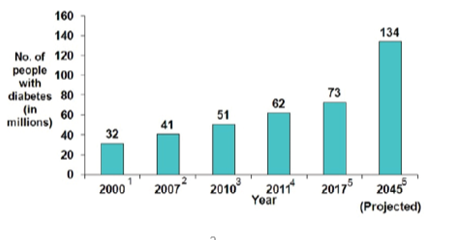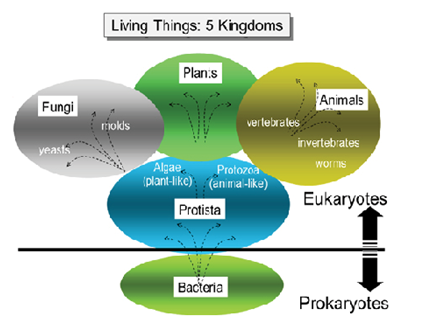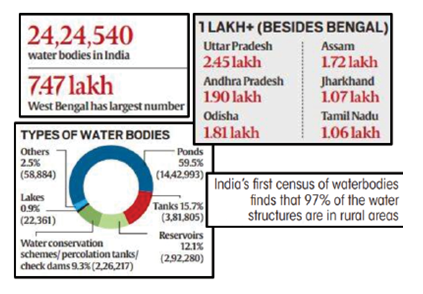Down To Earth(May01-15 2023)
1. Diabetes in Tribal Population in India
Tribal population in India has been facing a rampant problem of diabetes. Reasons can be attributed to years of malnutrition and a heavy reliance on rice which is supplied through a public distribution system.
DIABETES |
Types of Diabetes:
Lean Diabetes:
|
Diabetes in India:
- In India about 77 million people above the age of 18 years are suffering from diabetes (type 2) and nearly 25 million are prediabetics (at a higher risk of developing diabetes in near future).
- It is predicted that by 2030 diabetes may affect up to 79.4 million individuals in India, while 42.3 million in China and 30.0 million in the United States.

Diabetes in Tribal Population:
- Bilaspur district's health office shows that the community health centre (CHC) has diagnosed 922 new diabetes patients between April 2022 and February 2023 where total diabetes patients in the village is at 1063.
- The Union Ministry of Health and Family Welfare said that the proportion of deaths due to NCDS (among all deaths) rose from 37 per cent in 1990 to 61 per cent in 2016.
- According to a paper in “Science-Direct” 104 million tribal people, or 8.6 per cent of the country's population, could suffer from diabetes.
- A 2016 paper, argues the prevalence of diabetes in tribal areas ranges around 1-10%.
Reasons of Diabetes in Tribal Population:
- Over reliance on rice distributed through TPDS is attributed to the sudden rise of diabetes in the tribal population.
- Traditionally, the tribal population would cultivate millets, grow vegetables and fruits. This practice has vanished over the years.

- The third NNMB report (2008-09) shows that the proportion of individuals with protein calorie adequacy decreased among all the age groups.
- Diabetes is rampant in tribal populations due to lack of guidelines and awareness and resources to manage the health condition.
- The tribal population affected by diabetes has become frail and therefore unable to be physically active.
Ways to reduce Diabetes Burden:
- Government must invest in proper data management systems for disease control, training of ASHA and healthcare workers, hospitals infrastructure etc.
- Decentralised care and establishment of other non-medical approaches like peer support groups etc to create awareness and inclusivity.
- The situation can be improved by nutritional rehabilitation of mixed food types, including egg, millets and nuts which can be distributed through TPDS.
2. Termite and Methane Emission
Termites are counted among natural sources of methane like wetlands, wild animals, livestock and geological features like volcanoes, and are estimated to account for 1-3% of emissions globally.
TERMITES |
|
Termites are a group of detritivores insects which consume a wide variety of decaying plant material, generally in the form of wood, leaf litter, and soil humus. |
About Greenhouse effect and gases:
- The greenhouse effect occurs when greenhouse gases in a planet's atmosphere trap some of the heat radiated from the planet's surface.
- The planet's surface is warmed by solar radiation and this warm surface re emit heat through infrared thermal radiation.
- Greenhouse gases absorb some infrared radiation, reducing the amount of energy that escapes into space. This reduction in planetary cooling raises the planet’s average surface temperature.
- The main greenhouse gases are carbon dioxide, methane, nitrous oxide, hydrochlorofluorocarbons (HCFCs), hydrofluorocarbons (HFCs) and ozone in the lower atmosphere.
MAJOR TREATIES TO LIMIT GHGS |
|
Termite connection of GHGs:
Termites contribution to global methane emissions was first highlighted in 1932.
- In 1982, researchers published a paper saying termites are responsible for 150 Tg (1 Tg or teragram is equal to 1012 g) of methane emissions per year, or 40 per cent of total methane emissions at the time which was an overestimation
- According to the Global Carbon Project, in 2008-17, the world emitted 576 Tg of methane per year, of which termites contributed 9 Tg.
- Termites feed on dead and decaying plant and animal matter that causes methane emissions. Methanogenic microorganisms that live in the gut of termites break down the cellulose entering the body and release methane.
- Termites undo the damage partially by depositing in the mound a select group of microbes that can capture some emissions.

Problems in Data Collection:
- Data is collected from two methodologies currently:
- Study individual termites in a laboratory setting. This method, however, does not calculate methane capture by mounds.
- Check emissions released by individual mounds in forests; but here, emissions by individual termites outside the mound are missed.
- There are multiple other reasons for the uncertainty in estimation of termite emissions like:
- emissions data on only 5% of the 3,000 known termite species is available.
- estimating termite biomass (mass of all termites in all mounds globally), which is essential for calculating emissions, is an invasive process that involves destroying the mound and manually counting the insects.
- there is limited information on the degree to which mounds capture methane.
- Studying one colony does not necessarily mean similar results in other colonies across geographies.
- Another emerging unknown is how termites respond to climate change.
Conclusion:
- Decreasing biodiversity and decline in predator numbers could also increase termite population and thus the emission from them.
- To mitigate emissions from termites one solution could be to restore ecological balance.
3. Emerging Fungal Infections
Fungal infections often go unnoticed but can be difficult diseases to manage. Due to climate change these infections are not just spreading at a faster rate also new infections are emerging globally. Some infections are even showing signs of drug resistance which is cause of great worry.
What is Fungus?
- Fungi are eukaryotic organisms that have rigid cellulose- or chitin-based cell walls and reproduce primarily by forming spores.
- Most fungi are multicellular, although some, such as yeasts, are unicellular.
- Many fungi also infect plants and animals. Examples of diseases caused by fungi are ringworm and histoplasmosis.
- It is estimated as there could be 6 million species of fungi, of which scientists have so far identified only about 150,000 species.

Uses of Fungi:
- Fungi are responsible for keeping the natural world going by their aid in decomposition. By feeding on the organic matter, fungi return nutrients to the ecological system that are then made available to plants.
- Fungi are also part of the human microbiome; known as commensals, they live on human skin, in mucosal surfaces such as the oral cavity and vagina and in the gut, where they assist in digestion and train the immune system and its responses.
- Humans also use fungi for production of bioactive chemical compounds such as food (bread, cheese and wine), fuels (ethanol and biogas), pest control (herbicides, pesticides) and antibiotics (such as penicillin and cephalosporins).
Common Fungal Infections:
|
Fungus |
Infection / Disease |
|
Cryptococcus Neoformans |
Cryptococcosis, a fatal lung infection. It leaves patients severely immunocompromised. |
|
Candida Auris |
Candidiasis of blood, heart, central nervous system, eyes, bones and internal organs. |
|
Aspergillus Fumigatus |
Aspergillosis, causing a range of infections from allergies to invasion of organs and systems. |
|
Candida Albicans |
Iit can multiply in mucous membranes and cause life threatening candidiasis. |
|
Nakaseomyces Glabrata also called Candida Glabrata |
Candidiasis, second only to Candida albicans. |
|
Fusarium Species |
They cause invasive disease (invasive fusariosis), mainly in the respiratory system and the eyes. |
Emerging Threats:
- More than 300 million people are affected by serious fungal infections, with nearly two million deaths every year. This is higher than the mortality caused by either tuberculosis (TB) or malaria.
- Medical interventions that include immunosuppressants, persistent HIV infection and diabetes are helping growth of harmful fungi. Eg: The outbreak of mucormycosis (referred to as black fungus) in India, in 2021.
- Fungi in nature have begun adapting to higher temperatures and non-disease causing fungi are turning into disease causing.
- There are only four classes of antifungals and fungus have started showing resistance to some of them.
- There is a lack of proper knowledge and research facilities. As of May 2023, India has only 9 mycology laboratories whereas it needs one in every state.
FUNGAL PRIORITY PATHOGENS LIST (FPPL) |
|
Way forward:
- Over 80 per cent of patients could be saved if specialised diagnostics and antifungals were available everywhere. Thus research and diagnostic loopholes must be filled.
- Proper funding is required to develop healthcare infrastructure in the long run could help reduce the load of fungal infections.
- There is a need to improve global coordination in addressing fungal diseases, update infection, prevention and control measures and training public health professionals to appropriately treat fungal diseases.
- Strengthen surveillance to close the knowledge gap on burden of disease and antifungal resistance. This can be achieved by routine care, prioritising at-risk population and implementing global best practices to suit national, regional, and local needs.
4. First Waterbody Census of India
The Ministry of Jal Shakti has released the report of India’s first water bodies census. The “Water Bodies First Census Report” is a broader version of the sixth minor irrigation census. Since 1986, India has conducted a census of minor irrigation every five years, exclusively on rural water bodies.
Key Points of the Census:
- It defines water bodies as “all natural or man-made units bounded on all sides with some or no masonry work used for storing water for irrigation or other purposes (e.g. industrial, pisciculture, domestic/ drinking, recreation, religious, ground water recharge etc.)”.
- The report excluded certain types of water bodies which include:
- oceans and lagoons
- rivers, streams, springs, waterfalls, canals, etc. which are free flowing, without any bounded storage of water
- swimming pools
- covered water tanks created for a specific purpose by a family or household for their own consumption
- a water tank constructed by a factory owner for consumption of water as raw material or consumable
- temporary water bodies created by digging for mining, brick kilns, and construction activities, which may get filled during the rainy season
- pucca open water tanks created only for cattle to drink water

Concerns about methodology:
- India has a total of 7,933 towns as per Census 2011 but the water bodies census covers only 3,009 towns. Thus it fails to capture a complete national picture.
- Classification criterias of ponds, lakes, tanks etc. are not standardised and thus there can be discrepancies while counting water bodies.
- The survey has been done without the involvement of local governments and committees. Local governments and committees are generally the custodians of these water bodies.
- The census does not clarify about encroachments and whether they lie in urban areas or rural areas.
QUICK LINKS
